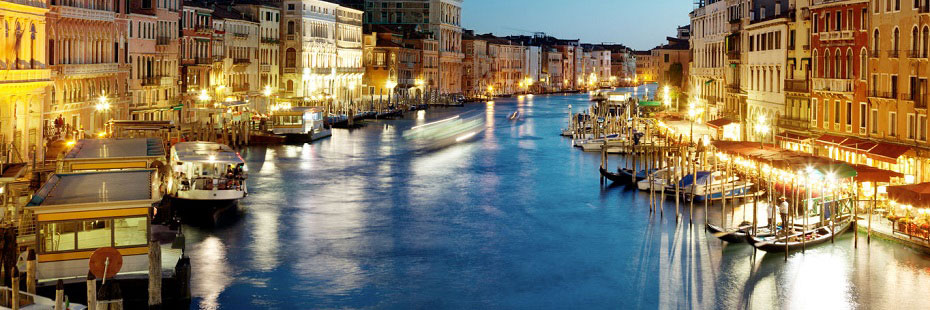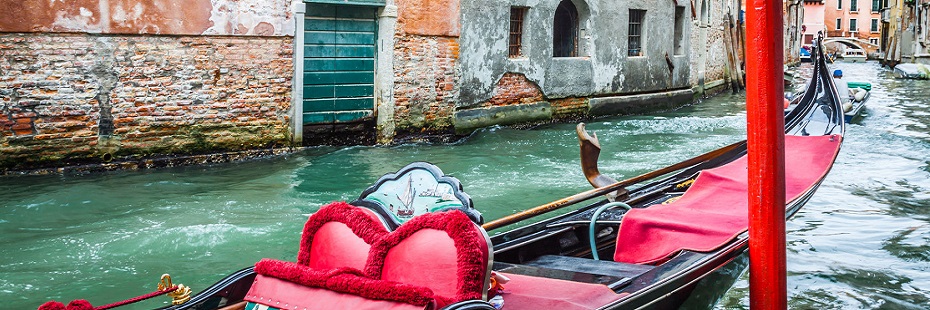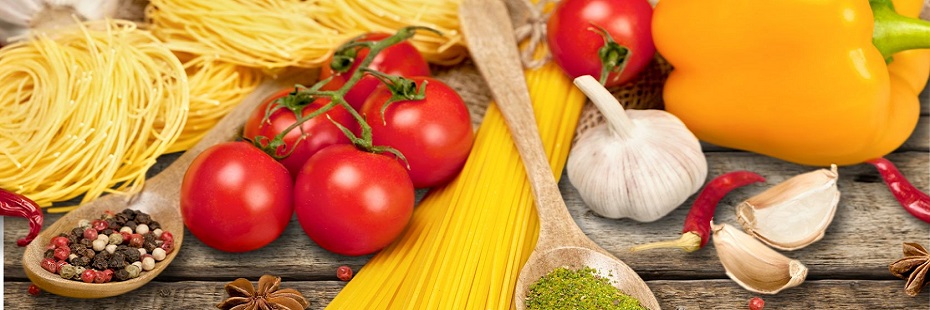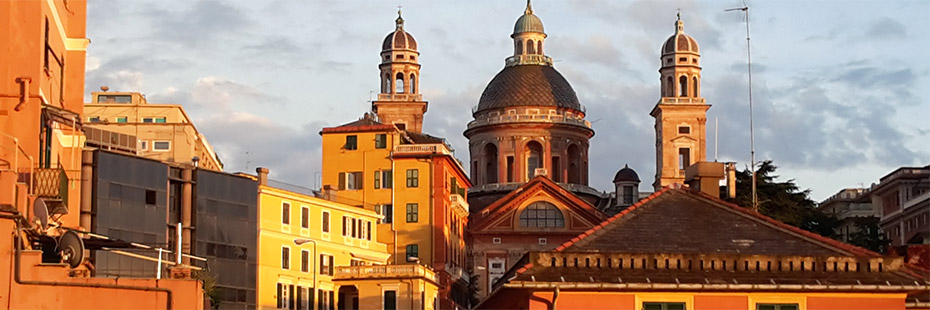"Masaccio, un pittore rivoluzionario (parte 1)" di Gaither Stewart
| Firenze: il ciclo di affreschi nella Cappella Brancacci, (chiesa del Carmine a Firenze - dipinto nel 1424-27), è il più famoso del Rinascimento italiano. | Florence: the cycle of frescoes in the Brancacci Chapel in the Florence's Carmine Church (painted 1424-27) is the most famous of the Italian Renaissance. |
 Cappella Brancacci |
|
| La parte eseguita dal pittore Masaccio è un lavoro esemplare della "nuova arte". Una pietra miliare nella storia dell'immagine dell'uomo e della coscienza della propria esistenza. | The part done by the painter Masaccio is the exemplary work of the "new art", a landmark in the history of man's image of himself, of man's awareness of his existence. |
| Ciò che gli affreschi della cappella Brancacci rappesentano è la chiara visione di due concetti: il concetto di un mondo vecchio e in declino, (negli affreschi in parte eseguiti da Masolino, il maestro più vecchio), e quello di una nuova estetica che vide l'uomo come veramente è. Nei pochi metri quadrati di questi affreschi si può vedere la vittoria del nuovo sul vecchio. Il venticinquenne Masaccio domina e confonde il vecchio maestro Masolino, il quale non riuscì mai veramente ad afferrare la nuova arte. Dopo la morte prematura del suo giovane collaboratore Masaccio, Masolino tornò al suo vecchio mondo classico. | The significance of the Brancacci frescoes is the clear vision it projects of two concepts: that of an old declining world in the part done by the older artist Masolino and the new aesthetic that saw man as he really is. One sees the victory of the new over the old in these few square meters of frescoes. The 25-year old Masaccio overwhelms and confuses the old master Masolino who never really grasped the new art. And who returned to his old classical world after the premature death of his young collaborator Masaccio. |
| Dopo secoli di abbandono la cappella è stata restaurata. Le scoperte sono significanti, come quella dell'esistenza di di un affresco di Masaccio sconosciuto, il "Martirio di San Pietro", gran parte del quale fu distrutto dalla negligenza e dalla stupidità. | After centuries of neglect the monument is being restored. The discoveries are significant, like that of the existence of a heretofore unknown Masaccio fresco of the "Martyrdom of Saint Peter", most of which was destroyed by neglect and stupidity. |
| Il pericolo maggiore occorse nel 1690, quando un ricco mercante cercò di comprare la cappella e distruggere gli affreschi, così odiati dai monaci che controllavano il Carmine. Ma la fama che gli affreschi acquistarono nel XV secolo li salvò, anche se lo stesso prestigio non bloccò la ricostruzione della chiesa nel 1746, che distrusse altri lavori di Masaccio. Infine, un incendio nel 1771 danneggiò gli affreschi, che tuttavia questa volta furono salvati dal restauro provvidenziale supportato dal Granduca di Toscana. Il fuoco, lo sporco e i fumi delle candele, di secoli, non estinsero mai completamente il genio di Masaccio che rimane per gli storici dell'arte la punta più alta del Rinascimento. | The greatest peril occurred in 1690 when a rich merchant attempted to buy the chapel and destroy the frescoes, so hated by the monks who controlled the Carmine. But the fame the frescoes acquired in the 15th century saved them. That prestige did not block reconstruction of the church in 1746 that destroyed other Masaccio works. Finally a fire in 1771 damaged the frescoes, this time saved by the providential restoration sponsored by the Grandduke of Tuscany. Fires, the dirt and candle fumes of centuries never extinguished completely the genius of Masaccio, who remains for art historians the high point of the Rinascimento. |
| Se la maggior
parte dei capolavori di Masaccio sono stati restaurati,
il mistero dell'uomo Masaccio rimane.
La sezione seguente è una ricostruzione fantasiosa di come finì la vita di Masaccio. |
If the principle
part of Masaccio’s masterpieces are now being restored,
the mystery of the man Masaccio still remains.
The following is an imaginative reconstruction of how the Masaccio saga ended. |
In cerca di Masaccio fra Firenze e Roma |
In search of Masaccio between Florence and Rome |
| Il traffico sulla Via Cassia era intenso per novembre. Dopo settimane di pioggia il cielo era ancora scuro. Passavano carri trainati da buoi, superati da carrozze con le tendine tirate, gruppi di due, tre cavalieri trottavano arrogantemente nel mezzo della strada stretta, dai solchi profondi, mentre pedoni bestemmianti si spostavano sui lati dove l'erba è alta, tirandosi i mantelli sul viso per proteggersi dalla polvere e dal fango. Tommaso e altri due uomini avevano preso la trafficatissima Via Cassia vicino ad Arezzo. Meglio essere in compagnia sulla strada principale, pensò il giovane uomo, che rischiare di incontrare i banditi sulle strade meno trafficate fra Siena e Roma. | Traffic on Via Cassia was heavy for November. After weeks of rain the skies were still dark. Ox-carts lumbered along, carriages with their curtains drawn rushed past, groups of two and three riders on horseback trotted arrogantly up the middle of the narrow and deeply rutted road, while swearing pedestrians moved to the high grass along the sides, pulling shawls around their faces against swirling dust and dirt. Tommaso and two other men had picked up the heavily travelled Via Cassia near Arezzo. Better to be in company on the main road, the young man thought, rather than risk the bandits on the less travelled road from Siena toward Rome. |
| La violenza e gli inganni dilagavano a Firenze. Gelosie, statagemmi e tradimenti regnavano. I Guelfi e i Ghibellini cospiravano in continuazione nella città che Dante e Boccacio avevano trasformato nella capitale spirituale d'Italia. Le grandi banche fiorentine erano le banche dei papi. I vini e le sete toscane sommergevano l'Europa. I ricchi fiorentini non si preoccupavano degli eserciti turchi alle porte d'Europa, mentre guardavano con invidia ai navigatori portoghesi che scoprivano nuovi mercati intorno al mondo. I cospiratori pianificavano il ritorno di un esiliato famoso, Cosimo de Medici. | Violence and treachery were rampant in Florence. Jealousy, ruse and betrayal reigned. The Guelf and Ghibellines were in permanent conspiration in the city that Dante and Boccacio had made into the spiritual capital of Italy. Big Florentine banks were the bankers of the popes. Tuscan wines and silks were flooding Europe. Rich Florentines didn't worry about the Turkish armies at the gates of Europe though they looked with envy at the Portuguese navigators discovering new markets around the world. And conspirators were plotting the return of the famous exile, Cosimo de Medici. |
| Nel 1428 le politiche di potere erano praticate dappertutto. Ognuno per sé. Fuori dalle città era peggio: tutti erano armati contro gli altri. Contro gli odi che permeavano il mondo. Al di fuori della Chiesa era guerra. Le inneggianti cattedrali romaniche che sorgevano dalla terra sembravano offrire salvezza contro i mali diabolici. E ora gli artisti volevano decorare queste chiese, e diffondere il messaggio della nuova era che albeggiava sull'Europa. | Power politics was everywhere the practice in 1428. Everyman for himself. Outside the cities it was worse: everyone was armed against the others. Against the hatreds permeating that world. It was war outside the Church. The soaring Romanesque cathedrals rising up out of the ground seemed to offer security against the evils of the devil. And now all the artists wanted to decorate those churches and spread the message of a new age about to dawn on Europe. |
| "I signori amano il mio messaggio, la mia arte nuova", si diceva Tommaso, ricordandosi però che i suoi colleghi e rivali lo amavano meno. "Non tutti sono così avanzati come Brunelleschi, Fra Angelico o Filippo Lippi". | "The patrons like my message, my new art," Tommaso said to himself, recalling however that his colleagues and rivals liked him less. "They're not all forward looking like Brunelleschi or Angelico or Filippo Lippi." |
| "Proviamo ad andare a Roma!" Tommaso era convinto. Ma il viaggio era lungo e difficile. Sporco e pioggia. Fortunatamente era in compagnia; quei due uomini era rimasti con lui sin da Firenze. Egli aveva dei dubbi sul suo maestro, il grande pittore Masolino, che lo aspettava a Roma. "Maestro? Non può più insegnarmi altro, forse solo alcune tecniche, ma non i contenuti e non il colore." | "Better to give Rome a try," Tommaso was convinced. But the trip was long and difficult. The dirt and the rain. Luckily he was in company; those two men had been with him since Florence. He had his doubts about his master, the great painter Masolino, waiting for him in Rome. "Master? He can’t teach me anything more, perhaps only some techniques, but no content, no colors." |
 La Trinità |
|
| Dato che Masaccio
aveva passato già dieci dei suoi ventisette anni
nella capitale, pochi dei veri artisti di Firenze ricordavano
che egli fosse Tommaso Guidi di San Giovanni Valdarno.
Lo chiamavano Masaccio. E lui amava quel nome. Gli sembrava
che gli si addicesse. Gli dispiaceva lasciare Brunelleschi
e Donatello. Le cose per loro andavano bene; avevano appena
finito la cappella di Santa Maria Novella. "Tutta
Firenze deve essere rifatta, ricreata, illuminata, modernizzata.
Ne abbiamo abbastanza di visi paradisiaci, irreali e di
eroi mitici. L'uomo
è importante. L'uomo è la storia. Egli è il
centro della nostra arte. Uomo orgoglioso. Ma sì,
portiamo un po' di luce nella vita scura e amara dell'uomo.
Luce e ombra, questa è la chiave. Chiaroscuro.
Ma anche i colori di Firenze, delle colline e delle valli.
Colori di luce che permeano le ombre. Uomini reali di
un mondo reale, in luce e ombra e in un bagno di colori.
Eroi reali della vita quotidiana, non uomini di un passato
lontano. Questo è il mio segreto" si disse
Masaccio. Non proprio un segreto, ma rese famoso il nome di Masaccio: il rivoluzionario dell'arte fiorentina. Masaccio. Anche se "accio" è inteso in senso dispreggiativo. "Tommaso, Maso, Masaccio, e tutto questo solo per il modo in cui vesto. Ma chi se ne importa dei vestiti?" |
Few of the
real artists in Florence could even remember that he was
Tommaso Guidi from San Giovanni Valdarno, since he had
already spent ten of his 27 years in the capital. Massaccio
they called him. He liked that name. He felt it suited
him. He regretted leaving Brunelleschi, and Donatello
too. Things were booming for them; they had just finished
the chapel in Santa Maria Novella. "All of Florence
is still to be re-done, re-created, illuminated, modernized.
Enough of those unreal heavenly faces and mythical heroes.
Man is important. Man is history. He is the center of
our art. Proud man. Let's bring some light into man’s
dark and bitter life. Light and darkness, that's my key.
Chiaroscuro. But also the colors, the rich colors of Florence
and the hills and valleys. Color like light permeate those
shadows. Real men of the real world in shadows and light
and bathed in colors. Real heroes of everyday life, not
men of a distant past. "That's my secret" said
Masaccio to himself. Not much of a secret, but it made the name of Masaccio famous. The revolutionary of Florentine art. Masaccio. Even if they mean that "accio" ending derogatorily. "Tommaso, Maso, Masaccio, all because of the way I dress. But who can possibly worry about dress?" |
| (continua) | (to be continued) |
12 Maggio 2025
TESTIMONIAL (more...):
"I liked the online materials, particularly the opening dialogues with Grillo, Pino and others. I think the expression of their voices ..."







